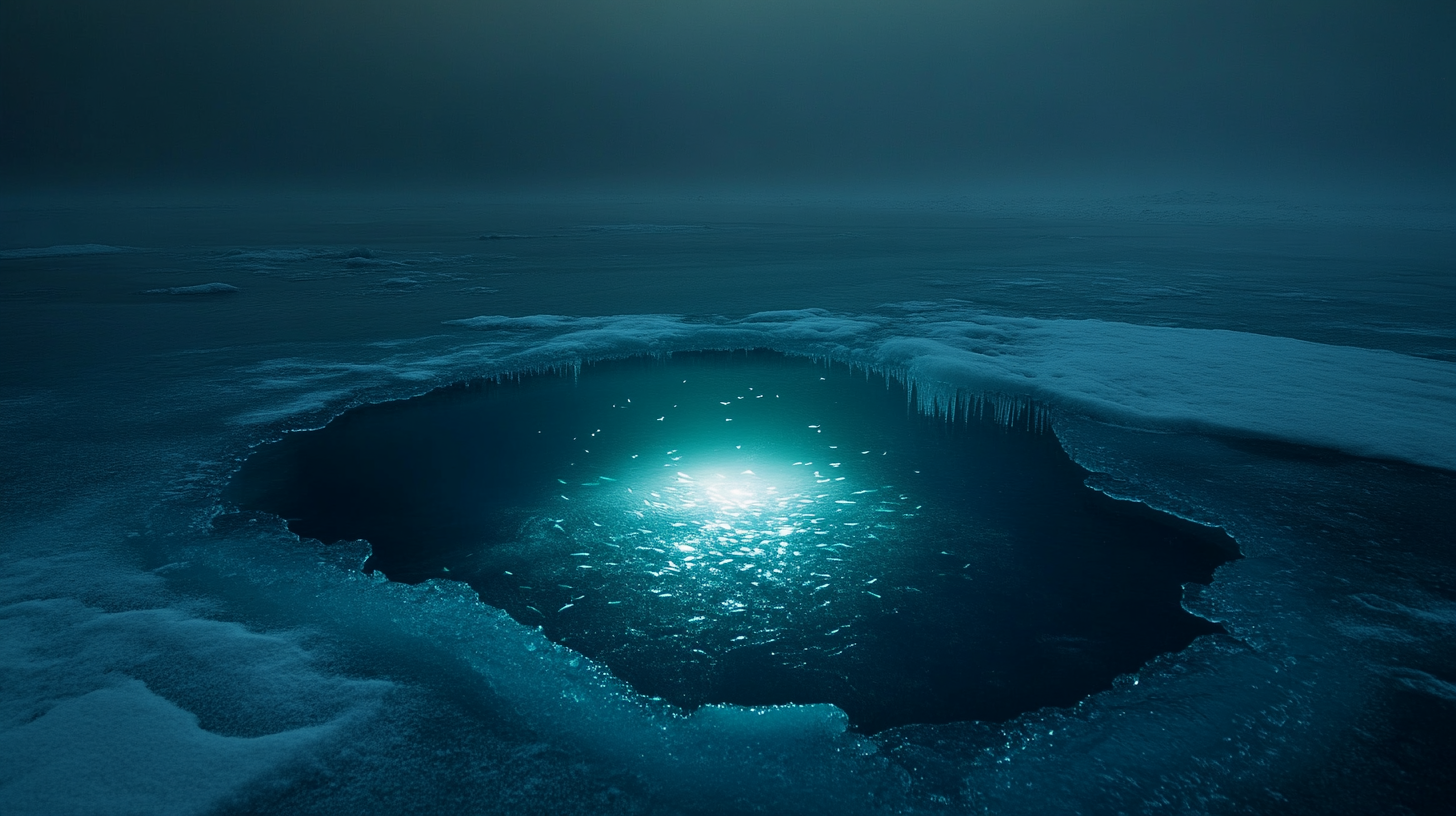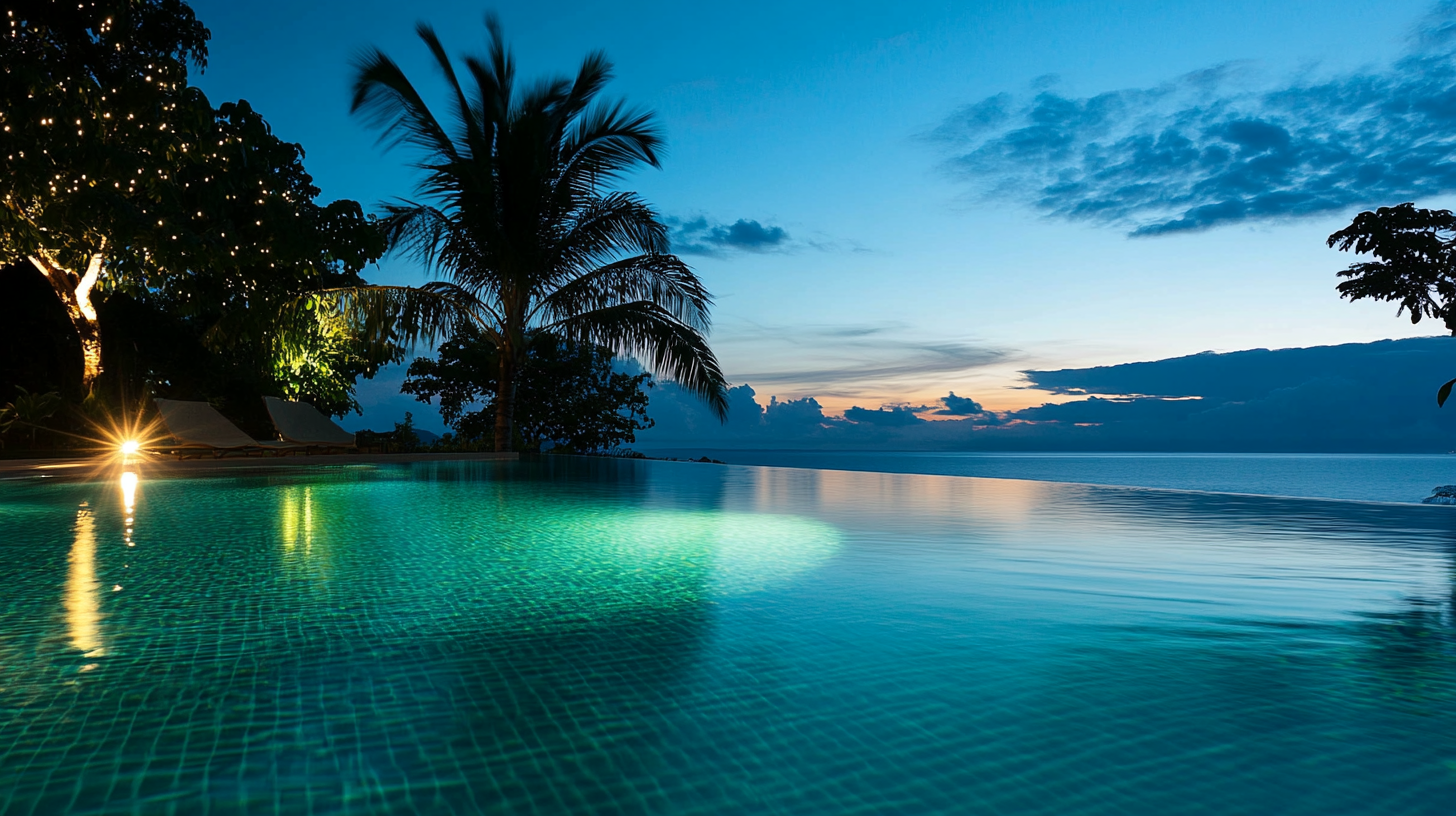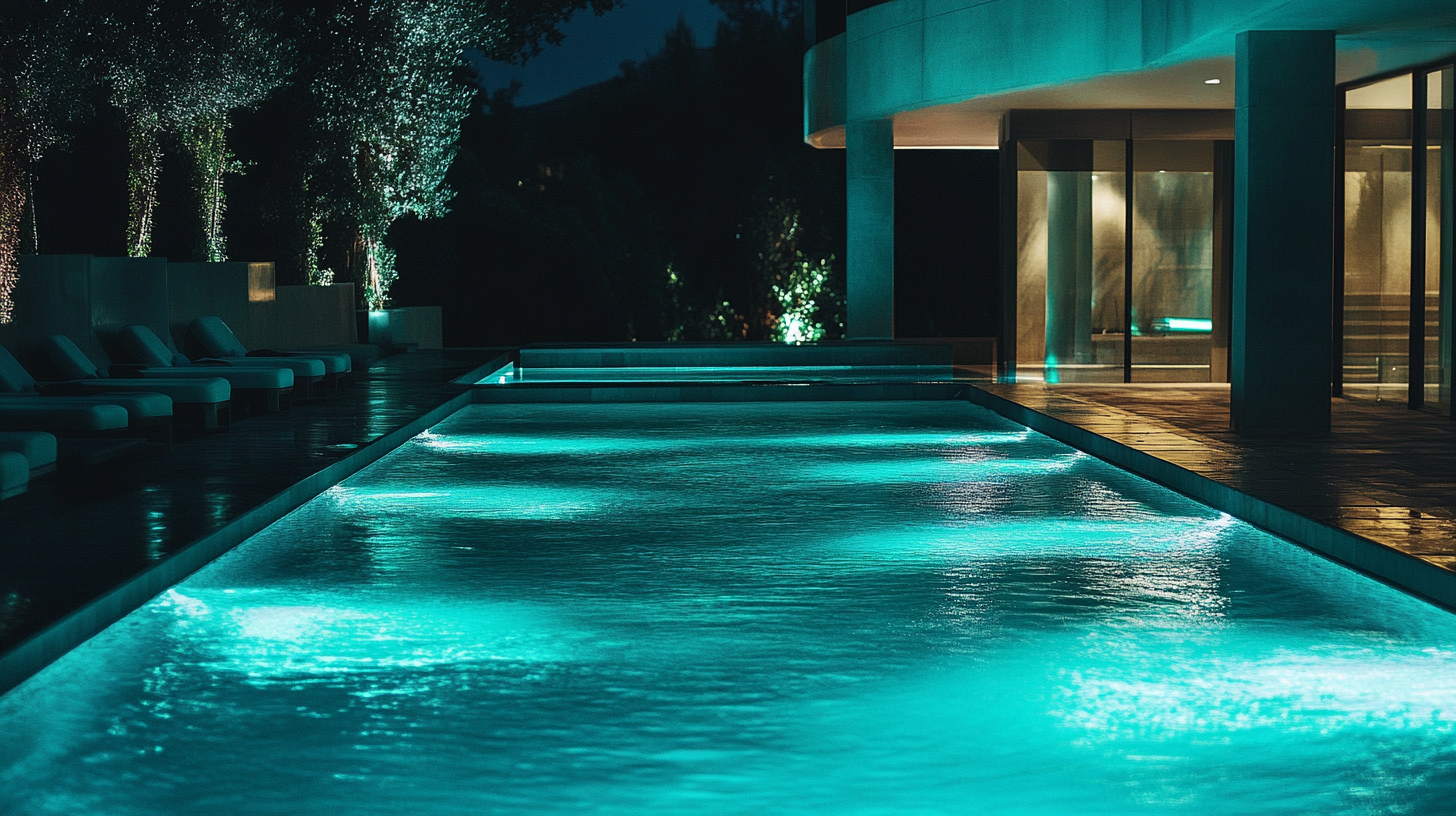Are underwater boat lights effective for ice fishing?
Underwater boat lights are more than just a cool aesthetic feature for your boat—they play a practical role, especially when it comes to ice fishing. These lights are typically submerged below the waterline to illuminate the surrounding area, creating a literal beacon beneath the surface. By mimicking a natural attraction like moonlight or the shimmer of sunbeams, underwater lights can lure in curious fish, particularly in darker conditions like those found under ice. The strategic use of lights in fishing has been around for a long time, but only recently have advancements in technology made them more accessible to everyday anglers.
So, what makes these lights so special for icy waters? Well, fish are often drawn to light because it resembles the scattered reflections they follow while hunting smaller prey. In the colder, darker settings of ice fishing, this effect is even more pronounced, as natural light is typically minimized. However, it’s essential to understand that not all fish respond the same way, and the effectiveness of underwater lights can depend on many factors, including water clarity and the type of fish you’re trying to attract. When used properly, these lights can increase your chances of success by turning an otherwise invisible world under the ice into a visible, active one.
How fish respond to lights in icy environments
In the unique environment of ice fishing, light behaves somewhat differently than in open waters, which leads to interesting reactions from the fish below the frozen surface. As sunlight barely penetrates through layers of snow, ice, and water, the under-ice world is plunged into near darkness most of the time. When you introduce underwater lights into this environment, it has the potential to transform the scene dramatically—not only for you but also for the fish. Some fish species have adapted to low-light conditions and may be drawn to a concentrated light source as a signal that prey might be nearby. In essence, underwater lights become a glowing feast sign for opportunistic predators on the hunt for their next meal.
Fish like crappie and walleye are particularly known for responding well to light under ice, recognizing the glow as a sign of small baitfish or plankton activity. The light can stimulate a mini feeding frenzy as smaller organisms like zooplankton gravitate toward the light source and attract the species that prey on them. However, not all fish react the same way. Some species, especially those that are highly sensitive to light, may initially be spooked by the sudden glow. This is where patience comes in. Often, once fish adjust to the light, they return in numbers significantly larger than when no light was present. The effectiveness of underwater lights becomes evident here as it fosters what is, in essence, a chain reaction of feeding beneath the ice.
An essential factor to consider is that water clarity plays a massive role in how far the light can spread and, consequently, how many fish it will attract. In murky waters, the light doesn’t penetrate as far and can be less effective at pulling fish toward your bait, while in clear icy waters, the glow can spread more easily, increasing your chances of catching fish. This difference is important to note when selecting your fishing spot and deciding on the placement and intensity of your underwater lights.
Additionally, acclimation time is crucial. Fish don’t all react immediately to sudden changes. Placing your light and waiting for the ecosystem to respond tends to yield better results. Over time, fish get used to the glow and associate it with a feeding opportunity. Knowing how fish react to these underwater lights can help you optimize their use and dramatically improve your ice fishing experience.
Best types of underwater lights for ice fishing
Choosing the right type of underwater light for ice fishing can have a significant impact on your effectiveness out on the ice. While there are many different lights on the market, not all of them are ideal for the unique conditions of ice fishing. Things like brightness, color, power source, and durability all factor in when deciding which underwater light will offer the best results for your fishing expedition.
First and foremost, LED lights are among the most popular and effective options for ice fishing enthusiasts. These lights offer a strong brightness-to-power ratio, meaning you’ll get a lot of light while preserving battery life—crucial for a long day or night on the ice. LED lights also tend to have a high level of durability in cold environments. Unlike traditional bulbs, they’re not as affected by low temperatures, ensuring they’ll function properly even in freezing conditions. In cold, icy waters where light is limited, powerful LEDs can penetrate through the murky or dark layers of water more effectively than weaker, low-output lights.
Another critical factor to consider is light color. Green and white LED lights are widely regarded as the best choices for ice fishing. Green lights, in particular, tend to attract zooplankton and other smaller organisms, which in turn lures in predatory fish like crappie, walleye, and sometimes even larger species like northern pike. White light is also effective in clear waters, offering a more natural glow that can replicate sunlight, which appeals to fish that may be less attracted to the intense green glow. One advantage of working with white light sources is that they create a broad, more natural illumination zone, which can be useful when targeting a diverse range of fish species. On the other hand, green lights are optimized for murkier conditions where visibility is lower, making them a great choice for places where the water may have more sediment or ice fogging things up.
Portable and battery-powered underwater lights are another excellent option for ice fishing. Since you’re likely carrying gear by hand across treacherous icy terrain, the last thing you need is a large, cumbersome light setup. Look for lightweight, compact units that are easy to transport and don’t require external power sources. This is doubly important if you’re moving between different fishing holes throughout your trip. Many modern underwater lights feature rechargeable batteries, which eliminate the need for carry-around generators, reducing both your weight load and overall hassle. Additionally, rechargeable batteries can be a great eco-friendly choice compared to disposing of traditional batteries after every few uses. Just make sure to charge them fully before your trip! If you anticipate longer hours or colder conditions, having an extra set of batteries or a backup light is also a good ice fishing tip to keep in mind.
For anglers looking to take their setup a step further, some underwater lights come equipped with remote controls or timers. These features allow you to manage the intensity of the light, duration, or even color changes from a distance, without the need to retrieve your gear from the water every time you want to adjust something. This can be particularly useful when you’re targeting different fish that may respond differently to light intensity. Plus, having remote control over your light can create less disturbance to the water, which might make fish more likely to stick around.
Finally, don’t forget about weatherproofing and water resistance. This is ice fishing, after all, and temperatures can dip below freezing easily. Make sure the underwater light you choose is rated for extreme cold and can withstand full submersion. While most underwater lights claim to be waterproof, not all are built to last under the added pressures and conditions present beneath a solid block of ice. Choosing a light with a durable, high-quality housing ensures that your gear lasts beyond just a few seasons of use and can survive being dropped onto hard, uneven surfaces like ice.
By selecting the ideal underwater lights based on these factors, your chances of attracting more fish under the ice increase significantly. Whether you’re going for a more compact, energy-efficient green LED or relying on bright white light to mimic daylight, the right underwater light can be the game changer in your next ice fishing trip. Ultimately, your choice of light influences your effectiveness, enhancing both your visibility and appeal to nearby aquatic life beneath the surface.
Pros and cons of using lights beneath the ice
Using underwater lights for ice fishing brings both advantages and disadvantages that anglers should carefully weigh. When employed effectively, these lights can dramatically enhance your fishing experience, but they can also present a few unforeseen challenges under particular conditions.
On the positive side, underwater lights are incredibly effective at attracting fish during ice fishing. By penetrating the icy, dark waters below, the lights create a visible underwater zone that draws in smaller organisms like phytoplankton and zooplankton. These tiny creatures are natural food sources for many fish species, meaning that introducing light essentially triggers a feeding cycle. As a result, predatory fish such as walleye, crappie, and perch are lured in as they follow the food chain toward your bait. Therefore, the use of these lights can significantly increase the effectiveness of your overall fishing effort, often leading to more catches than you’d experience in the absence of light.
Another advantage lies in the improved visibility that underwater lights offer anglers. Typically, the ice above water blocks much of the ambient sunlight, which in turn leaves the beneath-ice environment dimly lit or pitch dark. With strategic placement, underwater lights cut through this darkness, offering anglers better visuals of their surroundings. This is particularly beneficial when you’re employing underwater cameras or sonar to monitor bait and fish behavior, as the lights will enhance your ability to see beneath the surface. Essentially, this can serve as both a fishing aid and an educational tool for understanding the nuances of fish movement in icy conditions.
Additionally, the versatility of today’s underwater lights cannot be ignored. Modern innovations allow for easy portability, remote control access, and durable, battery-powered systems that make ice fishing more convenient. Some lights feature multi-mode settings that allow you to adjust the brightness or even change the color from green to white, depending on water clarity and fish preference. The compact design of most underwater lights makes it simple for anglers to carry them across vast ice fields without the burden of excessive weight, while battery-operated systems remove the need for power cords and electrical outlets that could be cumbersome in remote fishing locations.
However, despite these clear benefits, there are some notable drawbacks. For one, the intensity or wrong deployment of light can have the opposite effect; rather than attracting fish, it can scare them away. Some species, particularly those inclined to lower light levels, may be wary of such an abrupt change in their environment. If you turn on a bright light suddenly in a highly sensitive area, fish might scatter, mistaking the light for danger. This creates the challenge of having to lure them back, which might take time or require relocation.
Another potential downside is the battery life of your light system. While rechargeable lights are generally efficient, ice fishing often takes place over extended periods, and if your light dies out before the fish start showing up in droves, you may end up missing critical bites. Batteries are also affected by the cold; freezing temperatures can drain them more quickly than you expect, leaving you in the dark—literally—at a crucial moment. Carrying backup batteries or an auxiliary power source can help mitigate this issue, but doing so adds to the gear you’ll need to bring along, which can become cumbersome.
There’s also the challenge of varying water clarity. While underwater lights can be extremely effective in clear, non-turbulent waters where light can travel farther, they have reduced capacity in murkier waters. If you’re fishing in an area where the ice has a lot of trapped bubbles or sediment in the water, the effectiveness of the light may be diminished because it won’t penetrate deeply enough to attract fish from a distance. In such cases, adjusting light intensity or color might help, but this can’t completely compensate for naturally bad water visibility.
Lastly, there is a potential for disturbing natural ecosystems. Frequent use of artificial light in some environments could alter the behavior patterns of both small and large aquatic organisms, as fish and prey adjust to human interventions. Purposely shifting the way light affects under-ice life can sometimes upset the biological balance, leading to unpredictable patterns that may not always work in your favor. This is something to keep in mind, especially for environmentally conscious anglers.
Here’s a quick summary of the key aspects associated with using underwater lights for ice fishing:
| Pros | Cons |
|---|---|
| Attracts fish by creating a feeding chain reaction | Can spook some light-sensitive fish species |
| Improves underwater visibility for better bait monitoring | Battery life can be limited in freezing conditions |
| Enhances effectiveness in clear waters | Less effective in murky or sediment-heavy areas |
| Portable and convenient for remote ice fishing spots | Can disturb natural fish behaviors if overused |
As with any tool, knowing the strengths and limitations of underwater lights will allow you to use them to their full advantage while carefully minimizing the drawbacks to ensure a successful ice fishing experience.
Tips for maximizing effectiveness of underwater lights during ice fishing
Maximizing the effectiveness of underwater lights during ice fishing requires more than just tossing a light under the ice and hoping for the best. By carefully considering both the environment and the behavior of your target fish, you can significantly improve your chances of success, while making your fishing experience more enjoyable overall.
One of the most important factors to pay attention to is light placement. Positioning your underwater lights close to your fishing hole will maximize their impact. The light should be submerged deep enough to illuminate the area where fish are likely to be swimming, but not so deep that it loses effectiveness due to the murkiness of the water or stratification. Typically, it’s a good idea to place the light somewhere in the middle of the water column, unless you’re targeting fish that are known to be either very close to the bottom or swimming near the surface beneath the ice.
Another tip is to choose the right time of day to use your lights. Underwater lights are most effective during low-light periods, such as dawn, dusk, or at night, when ambient light from the sun is at its lowest. During daylight hours, the ice and snow above can block a substantial amount of natural light, but some fish may still avoid artificial lights if there’s enough ambient brightness. However, during night fishing or early morning sessions, you’ll notice a much more significant increase in fish activity around your illuminated spot.
Water clarity plays a huge role in determining the success of your underwater lights. In clearer waters, you can get away with using dimmer lights, but in murkier waters, boosting the intensity might help attract fish from farther away. If you find that the visibility in the water is especially poor, consider using green lights, which seem to cut through sediment better than other colors. This is one of the more useful fishing tips for ice fishing in locations where the water is cloudy or the ice is covered with snow or heavy slush, affecting light penetration.
Another useful trick is to remain patient. As previously mentioned, fish don’t always react immediately to the introduction of light. Sometimes, fish are startled by sudden brightness, but after a short adjustment period, they tend to come back—often in larger numbers once they associate the light with prey and feeding opportunities. For this reason, make sure to let the light work its magic for a bit before you decide to move to another spot. Don’t assume the light is ineffective just because you don’t get a bite in the first few minutes!
It’s also wise to select your lure carefully when using underwater lights. Smaller baitfish are naturally attracted to the lights, which in turn bring in predatory fish. When deciding on your lure, think about what’s likely to match the type of prey that local fish are targeting under these conditions. A lure that mimics small plankton or minnows could increase your odds of triggering a strike. Make sure to use bright or glow-in-the-dark lures to take full advantage of the visibility created by your lights.
When fishing in particularly cold environments, also take the temperature into consideration. Keep your batteries warm before deploying the light. Cold conditions have a notorious way of draining batteries faster than expected, so having a backup set ready could mean the difference between a successful and frustrating trip. Consider storing your backup batteries in an insulated pouch to help preserve battery life during those long days on the ice. Some anglers even use hand warmers in their storage bags to prevent their batteries from freezing.
Lastly, it’s crucial to observe weather conditions and adjust your light usage accordingly. If there’s a lot of snow accumulation on the ice, it can greatly affect both the amount of light that reaches the water and the behavior of the fish below. In such cases, carving a larger hole or extending your light’s depth might help improve the spread of light. Similarly, during extremely cold snaps, it’s worth remembering to test your gear frequently. Freezing temperatures can cause unforeseen equipment malfunctions, so periodically check your lights to ensure they’re functioning properly.
By keeping these useful fishing tips in mind, you’ll be well-equipped to maximize the overall effectiveness of underwater lights during your next ice fishing adventure. Whether trying to draw in large predatory fish like walleye and pike, or enjoying a casual day out on the ice, these lights are a valuable tool—provided you know how to use them to your advantage!


